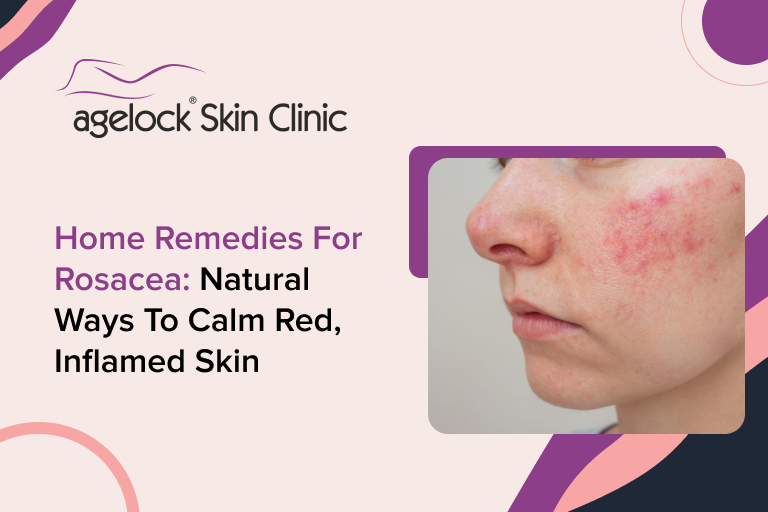Are you tired of dealing with those stubborn dark patches on your face? You’re not alone. Dark patches, also known as hyperpigmentation, can be frustrating to deal with. But fear not! As there are effective solutions available. In this comprehensive guide, we’ll explore the various causes of dark patches on the face. We will also provide you with practical tips and remedies to help you achieve clear, radiant skin. Whether you’re struggling with sunspots, acne scars, or melasma, we’ve got you covered. Say goodbye to dark patches and hello to a glowing complexion!
Understanding Dark Patches on the Face
Dark patches, or hyperpigmentation, occur when there is an overproduction of melanin, the pigment responsible for skin colour. Melanocytes, specialised skin cells, generate melanin. What happens when melanocytes become overactive or are stimulated excessively? They produce more melanin than usual, resulting in dark patches on the skin.
Causes of Dark Patches
Several factors can contribute to the development of dark patches on the face:
-
Sun Exposure:
Prolonged exposure to the sun’s UV rays is one of the primary causes of dark patches on the face. UV radiation stimulates melanocytes to produce more melanin, leading to the formation of sunspots or age spots.
-
Hormonal Changes:
Hormonal fluctuations, such as those experienced during pregnancy, menopause, or oral contraceptive use, can trigger an increase in melanin production. This can result in conditions like melasma, also known as “pregnancy mask,” characterised by symmetrical dark patches on the face.
-
Acne Scars:
Post-inflammatory hyperpigmentation often follows acne breakouts. Melanocytes can become hyperactive when the skin is inflamed due to acne lesions. This results in the deposition of excess melanin in the affected area, which results in dark spots or discoloration that persist even after the acne has healed.
-
Skin Injuries:
Trauma to the skin, such as cuts, burns, or abrasions, can trigger an inflammatory response. As the skin heals, melanocytes may produce excess melanin, forming dark patches or scars.
Dark Patches on the Face: Effective Treatment Options
When it comes to treating dark patches on the face, several treatment options are available:
-
Topical Treatments:
Over-the-counter and prescription creams contain ingredients like hydroquinone, retinoids (such as tretinoin or adapalene), kojic acid, and vitamin C. These components aid in lightening dark patches and evening out skin tone. They function by inhibiting melanin production and encouraging skin cell turnover.
-
Chemical Peels:
Chemical peels entail the application of a chemical solution onto the skin. In this process, the outer layers exfoliate and encourage cell turnover. This can help fade dark patches and reveal brighter, clearer skin underneath. Chemical peels vary in strength. Some are superficial, requiring minimal downtime, while others are deeper, necessitating several days of recovery.
-
Laser Therapy:
Laser treatments include intense pulsed light (IPL) therapy and fractional laser resurfacing. These treatments target melanin in the skin and break up dark pigmentation. This helps to lighten dark patches and improve overall skin tone. Laser therapy can be customised to target specific areas of hyperpigmentation with minimal risk of damage to surrounding tissues.
-
Microdermabrasion:
Microdermabrasion is a noninvasive exfoliating treatment. A handheld device delicately eliminates the outer layer of dead skin cells, helping to reduce the appearance of dark patches and promote skin renewal. Microdermabrasion is appropriate for all skin types and typically involves minimal to no downtime.
-
Home Remedies:
Natural ingredients like lemon juice, apple cider vinegar, aloe vera, and liquorice extract have skin-lightening properties. Thus, it can be used as a home remedy to fade dark patches over time. Home remedies may not be as potent as professional treatments. Yet, they can be a gentler option for those with sensitive skin or those looking for more natural alternatives.
Prevention Tips for Dark Patches
Prevention is key to maintaining clear, even-toned skin and preventing the recurrence of dark patches:
-
Sun Protection:
Protect your skin from the sun’s harmful UV rays by wearing sunscreen with SPF 30 or higher daily. Remember to reapply sunscreen every two hours, especially when spending long periods outdoors. Wear protective clothing, like sunglasses and wide-brimmed hats. Also, seek shade during peak sun hours (10 a.m. to 4 p.m.).
-
Avoiding Hormonal Triggers:
If you’re prone to hormonal hyperpigmentation, such as melasma, take steps to manage hormonal fluctuations. This may include using birth control methods that don’t exacerbate pigmentation. Avoiding hormone replacement therapy and consulting with a healthcare provider for personalised treatment options are also recommended.
-
Gentle Skincare Routine:
Opt for mild skincare products tailored to your skin type. Additionally, avoid harsh scrubs or exfoliants that can irritate the skin. Wash your face twice daily with a gentle cleanser and moisturise consistently. Moreover, use products containing ingredients like niacinamide, liquorice extract, and vitamin C. Doing all these can help brighten the skin and fade dark patches over time.
-
Be Cautious with Acne Treatment:
If you have acne-prone skin, be cautious with acne treatments to avoid triggering post-inflammatory hyperpigmentation. Avoid picking or squeezing acne lesions, as this can result in further inflammation and darkening of the skin. Instead, gentle acne treatments contain ingredients like benzoyl peroxide, salicylic acid, or retinoids. If you do so, it will help control breakouts without causing irritation or pigmentation.
Winding Up
Dark patches on the face can be a challenging skincare issue to tackle. However, with the proper treatment and prevention strategies, you can achieve precise, radiant skin. Consistency is key when you opt for topical treatments, professional procedures, or natural remedies. Following the above tips and treatments can effectively reduce and prevent dark patches on your face. Remember, consistency is key, and you can achieve precise, radiant skin with patience and dedication. So say goodbye to dark patches and hello to a glowing complexion!








